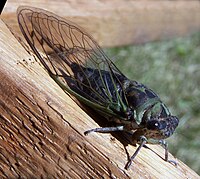
Photo from wikipedia
Asparagus crop is distributed worldwide, covering very different climatic regions. Among the different diseases that affect asparagus, vascular Fusarium wilt, caused by Fusarium oxysporum f. sp. aparagi (Foa), stands out.… Click to show full abstract
Asparagus crop is distributed worldwide, covering very different climatic regions. Among the different diseases that affect asparagus, vascular Fusarium wilt, caused by Fusarium oxysporum f. sp. aparagi (Foa), stands out. It is not only the cause of large economic losses due to a decrease in yield and shortened longevity of the plantation, but also prevents replanting. This work aimed to determine if F. oxysporum isolates associated with vascular wilt on asparagus have adapted differentially to the different agro-environmental conditions. The potential correlation between origin and mycelial growth under different temperatures and humidity conditions was analysed for isolates from asparagus fields cultivated in northern and southern Europe. The genetic and pathogenic variability were also analysed. While a clear effect of water activity on mycelial growth was observed, all isolates responded in a similar way to changes in water activity in the medium, regardless of their geographical origin. The results revealed a low genetic variability of F. oxysporum isolates associated with vascular wilt on asparagus without signs of differentiation correlated to geographical origin. The southernmost isolates of the two cultivated varieties inoculated did not express more pathogenicity than those isolated from the colder region.
Journal Title: Journal of Fungi
Year Published: 2021
Link to full text (if available)
Share on Social Media: Sign Up to like & get
recommendations!